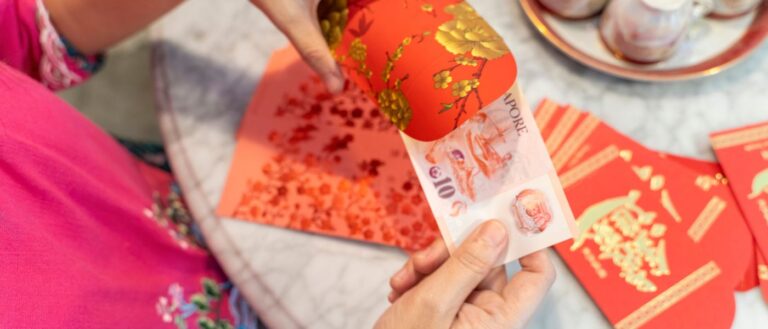For thousands of years, Chinese New Year has been celebrated throughout Asia to welcome Lichun (the beginning of spring) and new beginnings in Chinese culture. Today, this annual, 15-day celebration continues to bring friends and families across the world together for feasts and festivities.
“During Chinese New Year, my family and I come together and make handmade dumplings from scratch—including the dough,” said Benjamin Wang, a fourth-year data science student at Case School of Engineering.
For Tianyi Li, a fourth-year student majoring in nutritional biochemistry and metabolism and healthcare management student and president of Case Western Reserve University’s Asian American Alliance, Chinese New Year is also a way to connect to her cultural heritage by acknowledging her ancestors.
“Throughout the day, my grandma and mom cook [our family’s] favorite traditional Chinese dishes from scratch, such as dumplings, noodles and tangyuan,” Li said. “Then, when we set the table for dinner, we have extra seats and plates set as offerings for [our] ancestors.”
While many may be familiar with most publicized traditions of Chinese New Year (or its variants across different countries)—such as the use of the Chinese zodiac and lion dance performances— others may not know the significance behind the original traditions.
To better understand these customs, The Daily spoke with Xiong (Bill) Yu, chair of the Department of Civil Engineering; Lihong Shi, an associate professor of the Department of Anthropology; and Lindsay Yinqing Pan, associate director of the Office of Undergraduate Admissions, all of whom celebrate the Chinese New Year.
From superstitions to lantern festivals, read on to learn more about four Chinese New Year traditions you may not have known.
1. Fireworks are used to scare away evil spirits and monsters.
According to Chinese legend, firecrackers (along with the color red and fire) were first used to help protect people from the attack of the monster Nian, who was believed to destroy houses and villages. Today, many who celebrate Chinese New Year continue to set fireworks at different times of the celebration, including New Year’s Eve, New Year’s Day, and the fifteenth day of the new year for the Lantern Festival.
2. Red is the main color associated with Chinese New Year.
In addition to being believed to scare away evil spirits, red in Chinese culture symbolizes good luck, so individuals decorate their homes with red couplets and lanterns and calligraphy written on red papers. Each year, many individuals who start their zodiac year also wear red clothing, jewelry or accessories to prevent sickness, death or other forms of bad fortunes.
3. Spring cleaning takes place before or after New Year’s Day.
A commonly believed taboo of Chinese New Year, families are advised against sweeping, washing clothes or hair, or taking out garbage on New Year’s Day as it is believed to take away good fortune and wealth. On the other hand, it is believed that doing these things on (or before) New Year’s Eve will prevent bad luck. Other superstitions associated with the holiday include the beliefs that crying, breaking dishes, and wearing black and white cause bad luck (as the colors are associated with death).
4. This time is used for reuniting with family and relatives.
Similarly to Christmas, Thanksgiving and other holidays, families gather—specifically the day before Chinese New Year—to enjoy a big meal (called Tuan Yuan Fan) with fish, spring rolls and other “lucky” food. Celebrants also use this time to give gifts of red envelopes with money (lai see), see dragon lantern dances and other shows, and honor ancestors with offerings.
Although Chinese New Year officially began Sunday, Jan. 22, members of the Case Western Reserve community can take part in numerous upcoming events throughout Cleveland from now until early March.

